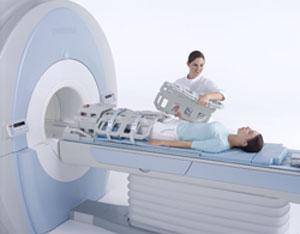
September 1, 2010 - Kosair Children’s Medical Center- Brownsboro, Ky., is the site of the 1,000th Vantage magnetic resonance imaging (MRI) system installation. Toshiba America Medical Systems’ milestone installation is the newest addition to Kosair Children’s Hospital and the Norton Healthcare Network.
As one of the only pediatric outpatient centers in the Kentucky area, Kosair Children’s Medical Center – Brownsboro will use the Toshiba Vantage Atlas MRI for general radiology imaging, including both cardiac and neuro imaging, for its pediatric population.
The Vantage Atlas MRI is an ideal system for a pediatric facility because it offers several patient-friendly features, including Toshiba’s patented Pianissimo technology, which reduces acoustic noise by as much as 90 percent.
“We selected the Vantage Atlas because it offers a quiet, quick and safe exam, which is what’s needed in a pediatric setting,” said Jeff Foster, M.D., director of radiology, Kosair Children’s Hospital. “Additionally, the Vantage Atlas improves patient care by offering a strong, fast magnet that provides outstanding image quality. Receiving high-quality images allows us to diagnose a patient and develop a treatment plan quickly, which is critical for providing the best care to our patients.”
“Above the integration of the equipment itself, we’re excited about the fact that our pediatric radiologists are aligned with Toshiba’s engineers to develop specific imaging protocols and additional imaging coils designed just for use with children,” Foster added.
Other patient-friendly features of the Vantage Atlas include an integrated coil system to eliminate the need to reposition patients during exams by integrating the coils into the table, creating a faster, more comfortable exam for pediatric patients. The system also enables feet-first imaging for a majority of exams, allowing patients to keep their head outside the bore. Pediatric patients are often nervous while undergoing a MRI exam, and feet-first imaging increases their feeling of openness by allowing the patient’s head to remain outside the bore.
For more information: www.kosairchildrens.com, www.medical.toshiba.com


 July 25, 2024
July 25, 2024 








